Fishing For Stocked Trout: Simple Expert Tips and Techniques
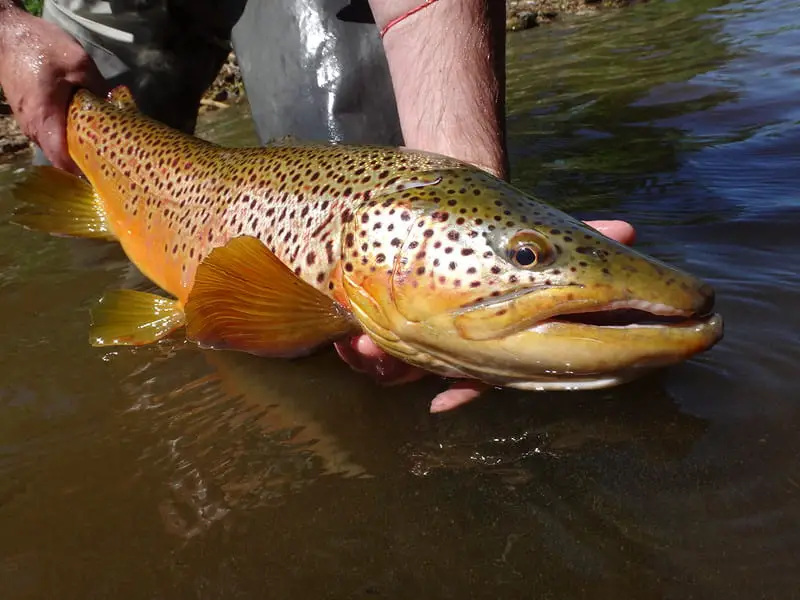
As a trout fishing guide, I spend part of my time fishing and guiding for harder-to-catch big wild trout, and the other part of the time, I’m guiding some great stocked trout ponds and rivers in my area.
I have 37 years of experience fishing for trout and 22 years of guiding experience, and I’ve learned from hundreds of other guides, which is how I can confidently say that the methods and baits that work for wild trout will work even better on stocked trout.
This is why when I fish or guide these stocked areas, my clients tend to catch ten times more trout than other anglers around me.
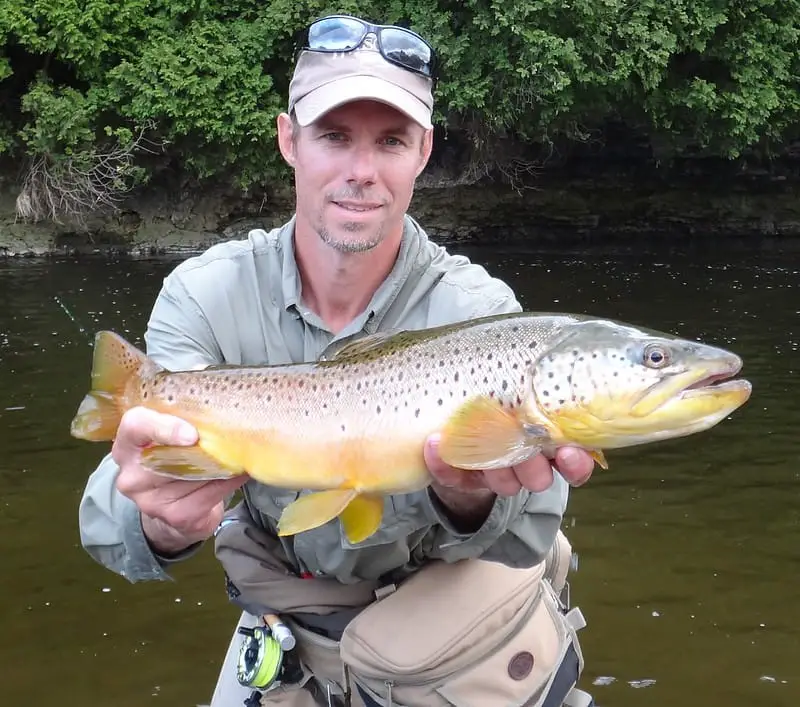
Because of my experience, I can also confidently say that there is a lot of misinformation and bad advice about fishing on the internet, which holds guys back from catching the maximum amount of trout.
I’m going to be brutally honest with you. If I fished the way many new anglers do or I use the same methods and baits being recommended on talk forums and other websites, I would catch fewer trout, and so will you.
The way I look at it, if you are going to fish for stocked trout, you might as well do it right.
Key Takeaways
- Behavior: Most newly stocked trout are disoriented and not sure what to do; they wander aimlessly, and they will put just about anything in their mouth. Stocked trout are about as dumb as a brick. But, a week or two after being stocked, most stocked trout will acclimatize to their environment and start acting and feeding like wild trout, and they will get much harder to catch.
- Baits: Most baits will work for dumb trout! But, as I explain in my article on the Best Baits For Trout, there are two types of baits: high-percentage baits and low-percentage baits. You should ALWAYS use high-percentage baits, even if a bunch of guys online say otherwise.
- Location: Stocked trout will eventually determine the right water for them to feed and rest. It may take a few weeks, but they will find water that provides cover, suitable temperature, oxygen, and food. These spots are harder to find in a lake, but in rivers, they are fairly predictable if you know how to read a river.
- Gear: Although a simple all-purpose 7-foot rod and reel with 4 to 6-pound fishing line will work, specialized rods like float rods, fly rods, or ultra-light rods work better.
- Setup: Use the right-sized fluorocarbon leader, a proven leader setup, a good hook ( not the kind most websites recommend), and you are on your way to catching ten times more trout.
Understanding Stocked Trout Behavior
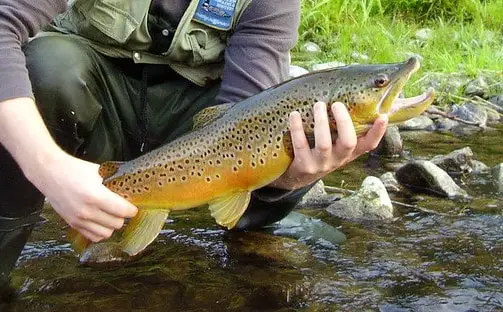
Stocked trout are raised in hatcheries and released into lakes, rivers, small streams, and ponds.
After being released into the water, they may initially be disoriented and hesitant to feed, or at least not know what to actually eat since they’ve been fed food pellets all their lives.
They are also not afraid of people.
At first, you can be noisy, use any dumb bait, you can even use the wrong hook or a leader that is too thick, and you can even fish poorly and still catch trout. But that doesn’t mean you should do any of these things.
The guy that uses high-percentage baits has a good hook and leader setup, fishes well, and is stealthy, will catch ten times more trout every time. I do this ALL the time with my clients.
The Right Gear and Fishing Rig For Stocked Trout Fishing
If you are not sure what gear you need or how to set up a trout fishing rig, this is it.
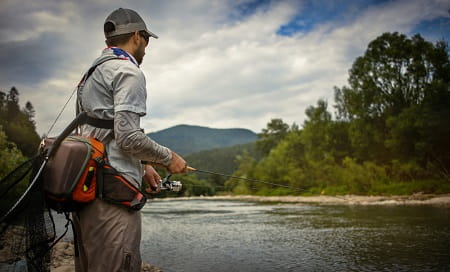
Spinning Rod: a 6 to 8-foot ultralight to medium light will work for most stocked trout. For small stream trout and for ponds a 6 to 7-foot rod is good, 7 foot is my go-to when fishing ponds, but if you mostly float fish the extra length of an 8 to 8.6″ rod is better.
Spinning Reel: A spinning reel size of 15 to 20 is ideal for most stocked trout.
Fly Rod and Reel Setup: Use an 8 to 9-foot fly rod setup with a matching reel and a floating fly line for all your trout fishing, except when you are using specific methods like nymphing. See: What Weight Fly Rod For Trout: What Do Guides Recommend
Line: For most bait fishing and when casting lures, stocked trout are not as strong, so a lighter line is good. I will use a 6-pound mainline most of the time, which helps with long casts too.
For float fishing, a monofilament line or braided line is best. For casting lures, a braided line combined with a 16″ to 30-inch fluorocarbon leader is best. Or just use a fluorocarbon mainline. See: The Best Fishing Line For Trout: What The Guides Use
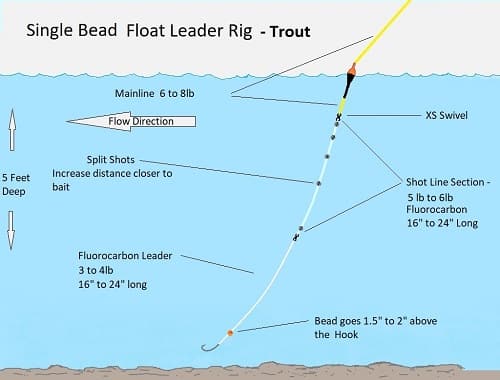
Leader Setup and Size: The most important part of your gear is your leader, which is where most new anglers make a mistake.
The leader is what is in front of the fish’s face, so if your leader is not good, you will struggle to catch stocked trout.
Your leader includes your weights and your hook. Even the hook can greatly improve your success. This is what I use when fishing for stocked trout:
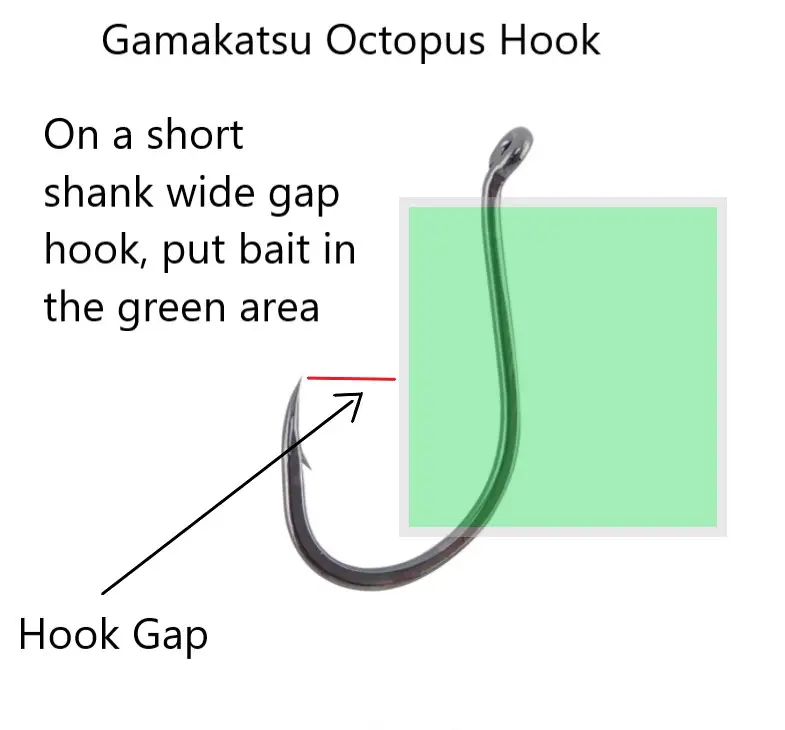
The Best Hook For Stocked Trout: I use shorter shank hooks like the Raven Specimen hook or the Gamakatsu Octopus hook.
See my article 10 Of The Most Effective Trout Hooks.
Two to four-pound fluorocarbon leader – I highly recommend the 4-pound Seaguar STS Trout/Steelhead Fluorocarbon Leader Material; I catch big steelhead on the 6-pound, so the 4-pound is more than enough for those stocks.
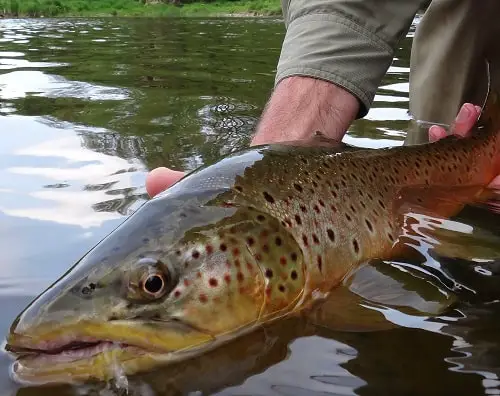
Bobber/Floats: if you are bait fishing, a bobber or a river float is a good idea. A slip float will also work in deeper water.
Be sure you use an easy but strong knot; see 9 Best Trout Fishing Knots For Beginners That Guides Use.
There is also other gear that you should have that will make your fishing experience better, such as Forceps, nippers, waders, fishing vests or fishing packs, polarized sunglasses, and more.
Check out:
- River Fishing Gear: Everything You Need To Succeed In 2023
- Fly Fishing Gear: Everything You Need To Fly Fish
Click the link if you really want more in-depth info and leader set-ups. Check out Trout Fishing: A Comprehensive Guide
Picking The Perfect Location To Fish Stocked Trout

If you fish a pond or lake, stocked trout tend to congregate near the shoreline, so you may have better luck casting from the bank rather than a boat.
Look for areas with structure, such as submerged logs, rocks, or vegetation, as these can provide cover and attract smaller prey fish.
In a river, fish the bigger and slower pools, slower current edges, near undercut banks, and tail-outs.
Timing is Everything When Fishing For Stocked Trout
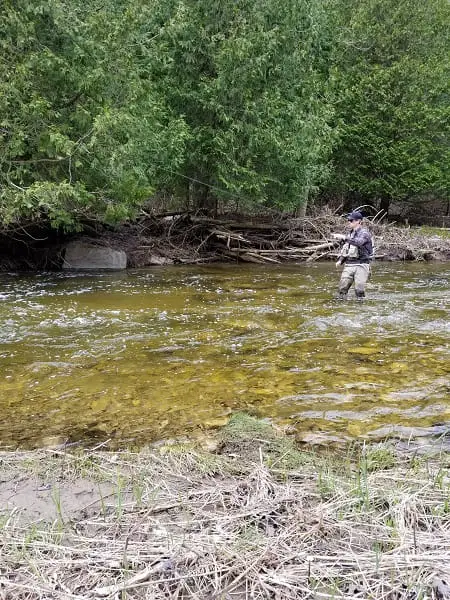
There are two things to consider when fishing for hatchery trout. First, you can often find the trout stocking schedule for most states and provinces.
They will also let you know where they are stocking and if they are stocking rainbow trout, brown trout, or brook trout.
Fishing a couple of days after they stock can be very productive.
The time of day can significantly impact your chances of catching stocked trout as well since early morning and late afternoon are often the most productive times. Just like wild trout, stocked fish are more likely to be actively feeding during these periods.
Additionally, overcast days can be best to catch fish, as trout are less likely to be spooked by shadows on the water’s surface.
The Most Effective Techniques For Stocked Trout Fishing
Experimenting with different fishing techniques can increase your chances of success. Here are a few methods to try:
- Float fishing – Bobber Fishing: Float fishing is popular and effective in streams, ponds, and lakes. Suspend the bait beneath a bobber/float to target trout feeding below the surface. Set your float to the desired depth.
- Drift Fishing: When fishing rivers without a bobber, especially in shallower water, you will catch more trout when using a method known as Bottom bouncing for the best success.
- Bottom fishing: Use a sliding sinker rig with bait to target trout feeding near the bottom. I call this method Plunking, and I use it for trout when they are deep in a lake. Plunking For Trout and Steelhead: Includes 2 Most Effective Plunking Rigs
- Lure Fishing: Cast small lures or spinners and retrieve them at slower speeds to entice strikes. Popular lures are jigs, spinners, spoons, and small crankbaits. See: 31 Best Trout Lures Of 2023 Rated By Trout Guides
- Fly Fishing: My favorite and most effective method for catching trout in rivers is to fly fish for them. Stocked trout find smaller streamer flies that are twitched slowly are very hard to resist. See: Fly Fishing For Trout.
Also, check out Spin Fishing For Trout: Guide Methods and Tips for More Trout.
Best Bait For Stocked Trout
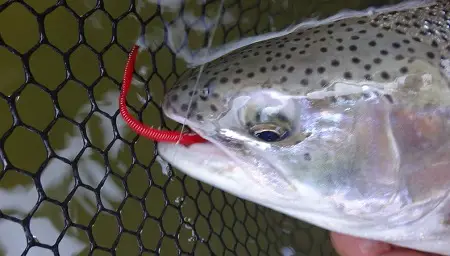
Many bait anglers will use Berkely power bait, Berkely nuggets, trout dough, corn, salad shrimp, bread, and even marshmallows. These are low-percentage baits.
Better proven baits are:
- Worms: The most effective trout bait is the garden worm (not the giant dew worm),. However, both are often rigged wrong, which will limit your success. See: Fishing With Worms For Trout and Steelhead: 10 Guide Tips
- Salmon Eggs and Trout Eggs: Fish eggs are a natural bait that can be excellent for all trout, especially in rivers. I discuss how to use eggs and how to make them even more productive. Click to see more.
- Grubs and Insects: Grubs, maggots, mealworms, and insects can be great baits for trout.
- Artificial Flies: In rivers, it’s hard to beat artificial flies, especially after the trout have been in the streams for a few days and have realized that insects are a food source. See 29 Best Trout Flies: Modern Flies Used By River Guides
- Live Bait: Minnows, leeches, and even crayfish are good trout baits.
You might also like:
Catch and Release Best Practices
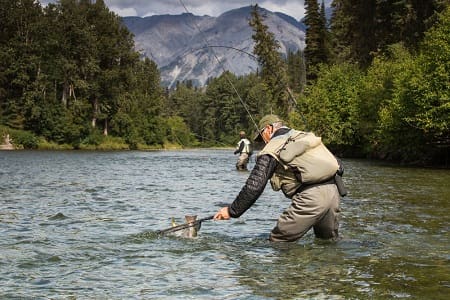
If you plan to release the trout you catch, be sure to follow proper catch and release practices.
Use a good trout net whether you are keeping or releasing your trout: See 11 Best Trout Nets Of 2023 – A Buyers Guide.
Use barbless hooks or pinch down the barbs on your hooks to make removal easier.
Wet your hands before handling the fish to minimize damage to their protective slime coating.
Gently remove the hook and release the trout back into the water as quickly as possible.
Cleaning And Cooking Your Catch
If you decide to keep your catch, it’s essential to clean and prepare the trout properly.
Check out How To Fillet A Trout Properly.
Quick Guide Tips If You Want To Catch Stocked Trout:
- Only use a floating bait if you are fishing on the bottom.
- Use the correct gear and set it up properly.
- If you are new to fishing, find easy access spots and watch how other anglers are catching fish. Avoid learning from guys that don’t catch stocked trout.
- Fish the shorelines of lakes and ponds where most trout cruise and feed.
- Check the local fishing regulations first.
- Opening day is often the business day of the year, so stocking is often done the week before or the week after, depending on the area.
- If you plan to keep and eat trout, learn to fillet them and how to remove the bones.
- If you plan to release trout, have a good wading net and replace the treble hooks on your lures with a single hook. A treble hook can do a lot of damage to fish, and they get stuck in the net more.
- If you use a braided line, attach a 24 to 30-inch Fluorocarbon leader with micro barrel swivels.
- If you bait fish around ponds, you can get a rod holder to place your rod.
- Use a creel to transport your catch.
- If an area has a lot of anglers, don’t fish in the same area, go find trout where they are less pressured.
Always remember to follow local fishing regulations, respect the environment, and practice ethical angling.
Tight Lines,
Graham
Resources:
https://www.tn.gov/twra/fishing/trout-information-stockings.html
https://tpwd.texas.gov/fishboat/fish/management/stocking/trout_stocking.phtml
https://nrm.dfg.ca.gov/FishPlants/
https://dec.ny.gov/things-to-do/freshwater-fishing/stocking/spring-trout-stocking
